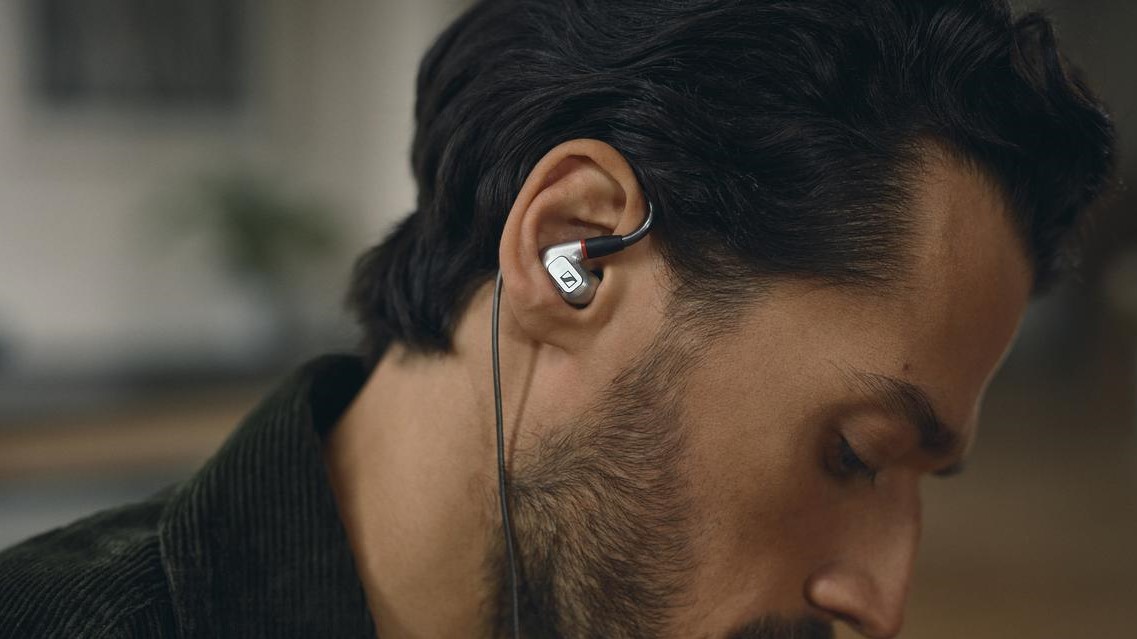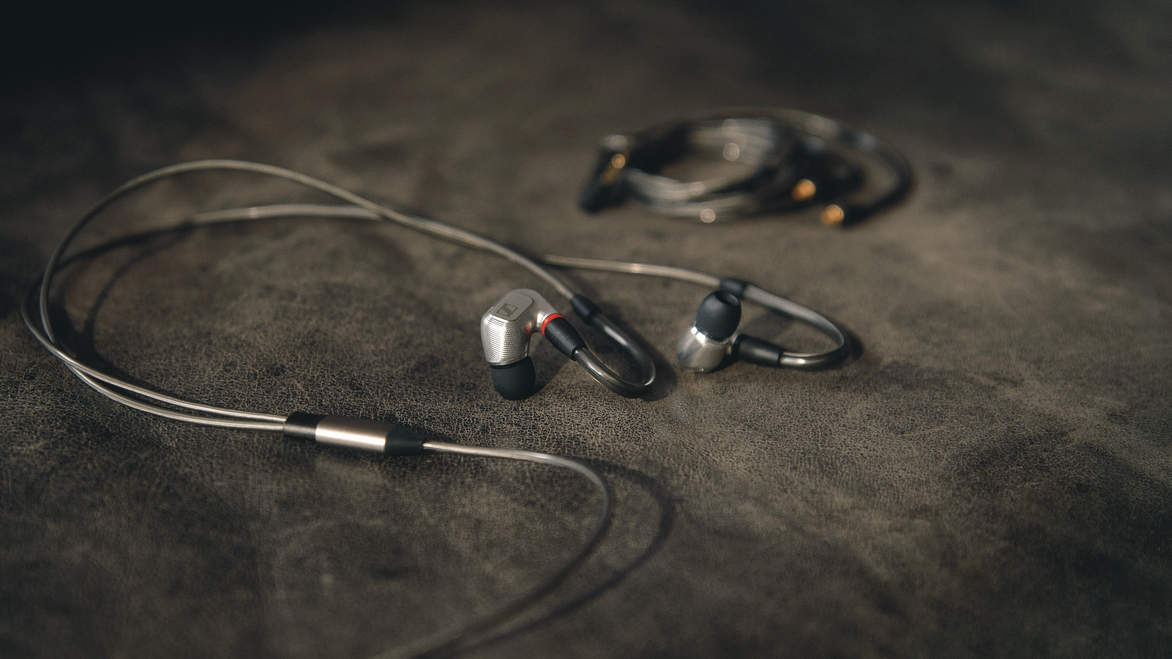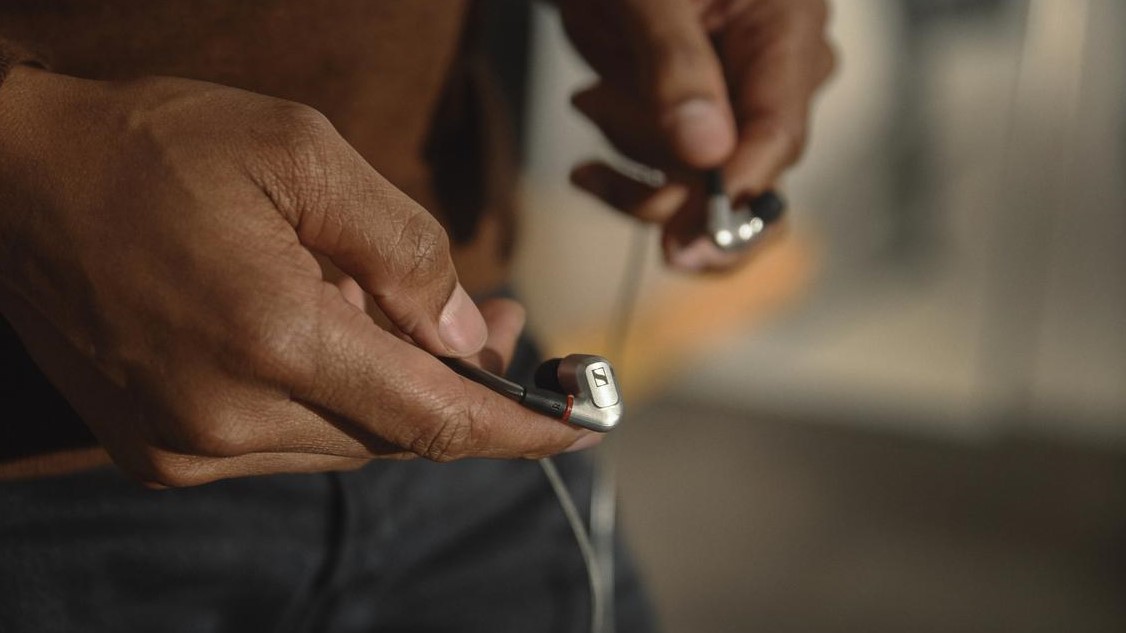Sennheiser’s new earbuds cost as much as a MacBook Pro — seriously?
Why the $1,300 Sennheiser IE 900 earbuds might be too pricey even for audiophiles

The Sennheiser IE 900 is a pair of high-end wired earbuds built for one thing: the finest, more detailed sound quality possible. The best wireless earbuds will often promise much of the same. But the IE 900 is dead serious about being an audiophile’s best friend, integrating a “unique triple-chamber absorber system” and the best 7mm transducer Sennheiser can come up with.
That’s all great, but the IE 900 costs $1,300. That's more than a MacBook Pro for just a pair of wired earbuds! Here’s why you should think twice before dropping that much cash on the IE 900, even if have the affinity for High-Res Audio that Sennheiser is banking on.
- Our picks of the best wireless earbuds
- The absolute best headphones we've tested
- Plus: Sony WF-1000XM4 leaks reveal design, colors and release date
I should first say that I haven’t used the IE 900 myself; having reviewed the Sennheiser IE 300 earlier this year, it wouldn’t surprise me if this new big brother really does sound exceptionally good. I also believe it’s perfectly acceptable to spend big on top-tier headphones when you have the hardware to support them, like a home hi-fi system.
However, being a pair of dinky, mobile-focused earbuds imposes limits on the IE 900 that make it hard to see how even best-in-class performance would make it worth more $1,300. And in Sennheiser’s defense, these concerns aren’t specific to the IE 900 itself.
Phones are not real hi-fi devices

The biggest problem is that smartphones and tablets just aren’t ideal devices for the studio-quality playback that the IE 900 is aiming for.
For starters, it’s become normalized for smartphones to omit a 3.5mm headphone jack, as manufacturers assume — with understandable, if not particularly iron-clad logic — that the owner is much more likely to use wireless headphones or earbuds instead. To use the IE 900 with, say, a Samsung Galaxy S21, you’d need either a 3.5mm to USB-C adapter or a much more expensive portable DAC.
In other words, you either need to spend even more money or use a cheap adapter that could introduce distortion and unwanted noise. Audio Science Review staffer "amirm" tested various 3.5mm to USB-C adapters for the Google Pixel series, and found different models could produce inconsistent results. Perhaps not to the extent that an average user would notice, or care. But for whose with a more discerning ear it would be unfortunate if audiophile-grade buds like the IE 900 were at the mercy of a dodgy dongle.
The built-in DACs of many phones also lack the power output to fully enable high-impedance headphones. Luckily the IE 900 is a low-impedance pair, rated at 16 ohms, but that doesn’t change how you can’t rely on mobile devices for the kind of sound that four figures would get you when buying in-home hardware.
There are already high-spec earbuds for less

Again, I’m not going to sit here and say the IE 900 will sound better, worse or the same as any other set of headphones until I’ve tried it. But it does have an awful lot in common with the IE 300, which at $299 might be the far more attainable option.
Besides the obvious, outwards design similarities, the IE 300 also has an in-house 7mm XWB transducer, gold-plated MMCX connectors and a special membrane foil to reduce unwanted resonance: all headline features of the IE 900. The IE 300 even has its own resonator chamber, if not the three that the IE 900 has. Are two extra chambers and an upgraded transducer really worth an extra grand?
And, while I don’t buy into sometimes-made assertions that you can’t really hear a difference between CD-quality music and Hi-Res, the IE 900 does appear to promise a level of sonic fineness that the human ear just won’t perceive. Its stated frequency response is 5Hz to 48kHz: an impressive spec on paper, but generally the human hearing range is only between 20Hz and 20kHz.
Sennheiser is correct in thinking that some smartphone owners will want the very best sound quality on the go. And even with high-performance Bluetooth codecs like aptX, the best way of getting that quality is with a pair of well-crafted wired headphones. But knowing the limitations of mobile playback, and that you can already get a great-sounding pair of Sennheiser buds for a fraction of the price, it’s not clear why paying $1,300 for the IE 900 makes sense; maybe get the MacBook Pro after all or one of the other best laptops picks.
- More: Our picks of the best turntables you can buy right now
Sign up to get the BEST of Tom's Guide direct to your inbox.
Get instant access to breaking news, the hottest reviews, great deals and helpful tips.
James is currently Hardware Editor at Rock Paper Shotgun, but before that was Audio Editor at Tom’s Guide, where he covered headphones, speakers, soundbars and anything else that intentionally makes noise. A PC enthusiast, he also wrote computing and gaming news for TG, usually relating to how hard it is to find graphics card stock.
-
pbergonzi Replyadmin said:The Sennheiser IE 900 spares no expense in pursuit of sound quality. But you should think very carefully about spending $1,300 on the new earbuds.
Sennheiser’s new earbuds cost as much as a MacBook Pro — seriously? : Read more
Thanks for the article.
They should cost that much--it's only a MacBook Pro, and they are Sennheisers after all.
Maybe people will mostly use DACs off their phones, but the impedance is low enough to be powered by phones, and it might be nice to think one is hearing the best sound their phone (or whatever they use) can put out.

